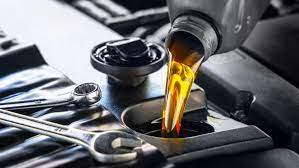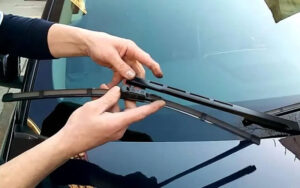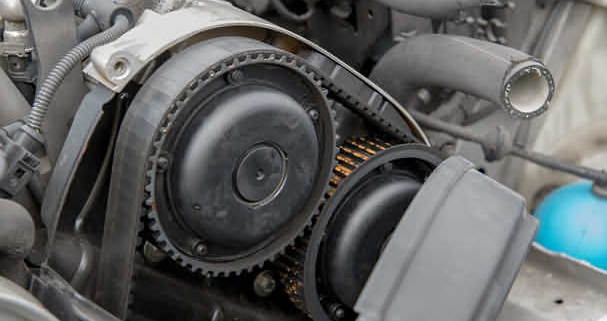10 Basic Car Maintenance Tips for First-Time Car Owners
Car maintenance can be daunting. There’s a lot to learn, and you don’t want to end up with a car that has problems because of neglect. That’s why I’m here to help! I’ll walk you through the basics of car maintenance so that when it comes time to buy your first car, you know what questions to ask and how to keep it running smoothly for years to come.
Checking the tires
- Check the tire pressure. The correct tire pressure will depend on your vehicle, but most manufacturers recommend checking it once a month and adjusting it to a proper level as necessary.
- Check the tread depth. If your tires have less than half of their tread remaining, you should consider buying new ones as soon as possible—the risk of hydroplaning increases dramatically with worn-out tires.
- Check the tire wear. A worn-out or damaged tire can be dangerous because it may not be able to handle sudden changes in speed or direction safely; make sure that all of your tires are in good condition before driving anywhere!
- Make sure everything else is right with each wheel by inspecting alignment and balance, too: you’ll want your wheels to be properly aligned so they’re pointing straight ahead at all times (not crooked), and balanced evenly so they don’t feel wobbly when you drive around town
Changing the oil

You’re a first-time car owner, and you’ve just had your oil changed at the dealership. But what happens next? Many people are unsure about how often their car needs an oil change or even how to change the oil themselves.
Here are some quick tips for changing the oil yourself:
- The frequency of your vehicle’s oil change will depend on several factors, including its size and engine design as well as your driving style. Many experts recommend changing the oil every 5,000 miles (8,000 km) for most vehicles; if you drive in stop-and-go traffic or many miles on highways with regular speeds above 55 mph (90 km/h), however, it’s possible that you may need to get an extra frequent service done sooner. If you’re not sure when this is necessary—or if you suspect something else might be wrong—you should consult with a mechanic before making any repairs yourself
Checking fluids

This is an important step that many people tend to overlook. It’s easy to forget that your car needs fluid, but these fluids are necessary for the engine and transmission systems to work properly. To check the levels of these fluids, you’ll need a dipstick for each one (coolant, brake fluid and transmission fluid). To add more if they’re low, simply turn off your engine and add whatever it needs—usually, this is just adding a capful at a time until it feels right. Check them every month or so; if you don’t know when they last were checked or filled up then it might be worth checking them anyway just in case!
Replacing windshield wipers

It’s important to check yours for wear and tear. If they are worn out, replace them before you head out on a rainy day. Replace your wipers once every six months or so—but use that as a general rule of thumb rather than an exact science.
The easiest way to replace wiper blades is by taking off the old one and inserting the new one in its place. You may need to adjust some screws on the side of your blade, but otherwise, this should be very straightforward!
Check and replace your brake pads and brake fluid regularly
Brakes are the most important part of your car, so it’s crucial to check them regularly. Your brake pads should be replaced if they’re worn down to 3/32 of an inch or less. If you have ABS brakes, you will also need to replace your fluid every two years. Don’t forget to check the brake fluid reservoir and top up when necessary!
There are many ways to check if your brakes are working properly:
A simple visual inspection will tell you if there’s any visible damage on the pad or rotor surfaces; this can be done by looking through a gap between two tires while the vehicle is parked on level ground or safely parked on a hill facing uphill (in case you need an emergency stop). For example, if both sides of one tire appear lower than those on either side of it then it may indicate uneven wear due to misalignment problems with suspension components such as ball joints or control arms caused by impacts like hitting potholes in bad weather conditions (especially during winter when ice forms beneath roads)
Replace your cabin air filters.

The cabin air filter is a small, pleated piece of paper or plastic that sits in the blower housing on your car. It does exactly what its name implies: it filters out dust and pollen from the air that comes into your car through the vents.
The cabin air filter should be replaced every year or 10,000 miles (whichever comes first). You can check if it’s time to replace this part by taking a piece of white paper and inserting it into the front opening of your blower housing where you see some black grates – this will tell you if there are any large particles inside blocking other smaller ones from getting through. If there are none present, then take out your current cabin filter and clean off all dirt before putting in a new one.
Know how to fix a flat tire.
If you’re looking to save cash and become self-sufficient, knowing how to change a tire can be a great asset in your journey as a first-time car owner. Knowing how to fix flat tires might not seem like an important skill at first glance, but it could end up saving you lots of money over time.
First things first: If you get into a situation where you need to change your own tire, make sure that the car is parked on level ground with plenty of room around it in case there are any spillages or debris from the work area. Next up, find out if there are any tools in your vehicle that will come in handy during this process: most cars have lug wrenches and jack stands under their hoods for just such occasions! The last thing left before beginning would be getting out some gloves and goggles if possible—never underestimate your ability to get grease on yourself!
Inspect the belts, hoses and brakes.
- Inspect the belts, hoses and brakes.
- Check the belts for cracks, wear and looseness.
- Check the hoses for leaks, age-related deterioration and damage.
- Inspect your brakes to see if they require servicing or replacement.
Check your timing belt.

The timing belt is an important component of your car’s engine. It synchronizes the rotation of the crankshaft and camshaft so that all valves open and close at the right time.
If you have a 3- or 4-cylinder engine, your belt will be located on the front of your engine block. If you have a 6-cylinder or 8-cylinder engine, it will be located at the back of your engine block.
You should check your timing belt every 30,000 miles (50,000 km). That may sound like frequent maintenance but don’t worry: A regular service schedule will ensure that this job doesn’t take long and isn’t expensive—and it could prevent damage to other parts in your vehicle!
To check if there are cracks in your timing belt, look for fraying along its edges; if you see any areas where it looks worn down more than others; also check to make sure that nothing has fallen into place during inspection because even a small piece could cause serious problems later on down the road!
Pay attention to noises, smells and vibrations.
As a car owner, you’re going to have to do some maintenance on your own. Besides regular oil changes, brake pad replacements, and tire rotations (to name a few), there are other things you can do that will save both time and money.
First-time car owners may have trouble knowing what they should be looking for when it comes to basic car maintenance. Here are some tips:
- Listen to the engine while it is running. Does the engine sound smooth or rough? If it sounds rough, could this be due to a clogged air filter or dirty fuel injectors? Is it loud enough that you can hear its distinctive roar from inside the house?
- Smell the exhaust when idling at stop signs and other traffic lights. What does it smell like? A sweet smell could indicate excessive fuel consumption due to worn valve guides or worn piston rings which allow combustion gases past their seals into places where they aren’t supposed to go (like into your exhaust system). An acrid smell could mean an internal leak within one of these areas allowing hot combustion gas into them too quickly for proper cooling before being expelled out through back pressure valves causing excess carbon deposits on pistons/piston rings/valve guides etc…
Learn to do basic maintenance before you buy a car.
Learning the basics of car maintenance is not as hard as it sounds. If you can learn how to change your oil, check your tire pressure, and rotate your tires, then you’ll be able to do basic repairs on your own car.
You will also know when something more serious needs to be fixed or replaced in order for everything else on the vehicle to work properly.
The most important thing when it comes to car maintenance is learning how to do it yourself. It’s easy to pay someone else to do the work, but if you don’t know how things work under the hood, it will be hard for them to fix anything. If you can learn some basic skills and make it a habit, then you will save yourself money by not having to take your car into an auto repair shops in jersey city every few months or so.



